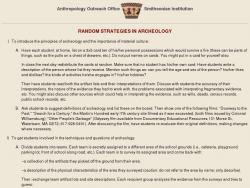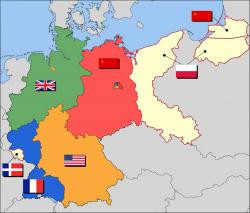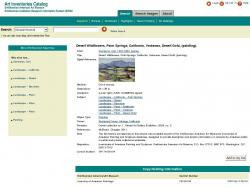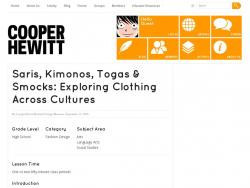Kate Harris
Social Studies teacher
Pittsburgh CAPA
Middle School (13 to 15 years old), High School (16 to 18 years old)
Teacher/Educator
Language Arts And English, Civics, Literature, Cultures, Economics, Social Studies, Geography, Writing, US History, Arts, Other
I'm a history-lover, art fan, and bookworm. I taught high school history (U.S. History and World Religions) for ten years in North Carolina, teach currently in Pittsburgh, PA, and am working to help teachers make the most of this new resource!
Kate Harris's collections
Alexander Gardner's Photographic Sketchbook of the War
<p>This is a collection of photographic plates from Alexander Gardner's Civil War Sketchbook that can be used for teaching about the Civil War in a number of ways. Students can explore the collection and look for images that help them learn about one of the following themes:</p><p>1) Technology</p><p>2) Military Strategy</p><p>3) Life in Military Camps</p><p>4) Death and Destruction</p><p>5) Photography as Art and Communication</p><p>The plates are in order as they appeared in the book, although some have not been included in order to limit the size of the collection. Note that some of the images have additional information linking to external websites with lesson ideas or simply more background on the particular photograph. In addition, be aware that each plate has two images, the first showing the photograph and the second showing Gardner's caption. The three final photos are not from the sketchbook, but show some of Gardner's more famous images and reveal more about the man himself.</p><p>WARNING: Some of the images in this collection include pictures of the dead on the battlefield, which some viewers may find disturbing. Please carefully consider whether use of this collection is appropriate for your specific audience.</p>
 Kate Harris
Kate Harris
40
All You Need is Love
<p>The best of love-themed graphic design in the Smithsonian Institution's collections. </p>
 Kate Harris
Kate Harris
12
Ancient Egypt: A Variety of Artifacts
A topical collection to be used for student research projects.
 Kate Harris
Kate Harris
55
Ancient Rome: Discover the Story
This collection includes objects and artifacts representing life in ancient Rome. Students are challenged to write a creative story or narrative based on the objects in the collection, illustrating Roman life. The last two resources in the collection are a worksheet that teachers may use to frame the assignment and a grading rubric for the assignment.
 Kate Harris
Kate Harris
12
Archaeology Lessons
This collection includes lesson plans and artifact collections that would be useful for any K-12 study of archaeology. Brief descriptions of the resources are included where necessary, so that teachers can quickly determine what might be applicable to their own classrooms.
 Kate Harris
Kate Harris
14
Artifacts from the Battlefield: WWI
This is a collection of artifacts from World War I, including photographs, uniforms, and some surprising contributors. Students will watch a video to observe how a curator connects an object (in this case a woman's AFFW uniform) to the person who used it, and then choose three objects from the collection to study before sharing findings with other classmates. Students should think about the guiding questions below as they investigate the objects in the collection.
Guiding questions:
How was World War I different from wars that came before?
What impact did technology have on the war?
What kinds of threats did soldiers face during World War I?
How did soldiers find comfort during World War I?
How might the experience of World War I have influenced the culture and politics of the years following it?
 Kate Harris
Kate Harris
14
Building the Berlin Wall
This teaching collection explores the Berlin crisis leading to the building of the Berlin Wall. It addresses the following guiding questions through primary/secondary sources and teaching suggestions:
-Why was Berlin the center of crisis in between 1958-1961?
-Why did the Soviet Union sanction the construction of the Berlin Wall?
-Why did the United States allow it to happen?
-How did the Wall affect the lives of East and West Berliners?
-Does the end (no more crises in Berlin) justify the means (the Wall)?
-How does this incident reflect the greater issues of the Cold War?
Students will practice reading primary sources and analyzing multiple perspectives.
Tags: Wilson Center, Cold War, Khruschev, Stalin, Berlin, Wall, Kennedy, Soviet Union, USSR, Communism
 Kate Harris
Kate Harris
17
Bushido, Bun, and Bu: Life as a Samurai
This collection includes resources reflecting the ideal characteristics of a Japanese samurai. After reviewing the resources in this collection, students will be able to:
-analyze the changing role of the samurai in Japanese society
-define and give examples of bushido, bun, and bu
-compare the expectations for samurai with those of other social groups
Students will begin by visiting two websites in order to gain background information on samurai. They will then read an excerpt from The Way of the Samurai and answer questions. Next, they will review a series of resources and determine whether they represent bushido, bun, or bu. Finally, students will begin a comparative research assignment.
 Kate Harris
Kate Harris
16
California: A Land of Opportunity?
<p>As we continue to read "The Grapes of Wrath," I'd like you to consider the way in which California represents the "American Dream." How has this changed over time? Has California always lived up to its image? Consider who has access to dreams and opportunities in California at any given time. </p><p>After you look through the collection, choose one of the following assignments to complete and submit your assignment using the "Submit File" option that is part of the last resource. Hint: you may want to take notes and/or save images as you are browsing the resources here. </p><p>Possible assignments:</p><p>1) Create a timeline of "Opportunities Gained and Lost" in California using at least 8 images from the collection. For each image, identify who is gaining or losing an opportunity in this instance, and what kind of opportunity is being referenced. Remember this is a timeline and will need to be in chronological order by year. Complete your timeline with an image that you have found (from the Learning Lab or an outside resource) that represents California today.</p><p>2) Would you argue that "California is a land of dreams"? How could you change that statement to make it more accurate? Write an essay defending your statement that references at least 4 images from this collection. You may want to do some additional research to supplement your essay.</p><p>Tags: point of view, change, continuity, cause, effect, Dust Bowl, drought, migrant, migration, chronology, Steinbeck</p>
 Kate Harris
Kate Harris
34
Clothing Across Cultures
This teaching collection was made to accompany the Cooper Hewitt Design Museum lesson plan "Saris, Kimonos, Togas & Smocks: Exploring Clothing Across Cultures." In addition to saris, kimonos, togas, and smocks, huipils and kanga are used as examples of culturally-specific clothing.
The lesson asks students to complete think about the cultural importance of clothing, and then to research a specific type of clothing and build a presentation around that research. Students might use this collection as a source for images for their presentation, to inspire research topics, or as a common basis for discussion with their peers.
 Kate Harris
Kate Harris
32
Coffee Break
The best selection of coffee makers, urns, and mugs to be found in the Smithsonian collection. The best thing about waking up...
 Kate Harris
Kate Harris
23
Cold War Fears
<p>This is a topical collection about American fears during the Cold War. What were Americans afraid of? How were these fears expressed in United States culture? How successfully did the government address these fears?</p><p><br /><br /></p><p>Students and teachers may want to explore the resources in this collection to consider the psychological impact of the Cold War and how Americans prepared themselves for the unknown. </p><p><br /><br /></p><p>Tags: Cold War, McCarthy, UFOs, aliens, space race, fallout shelters, Civil Defense, radiation, spies, Hiss, Rosenberg, Murrow, Sputnik, cause and effect</p>
 Kate Harris
Kate Harris
15










